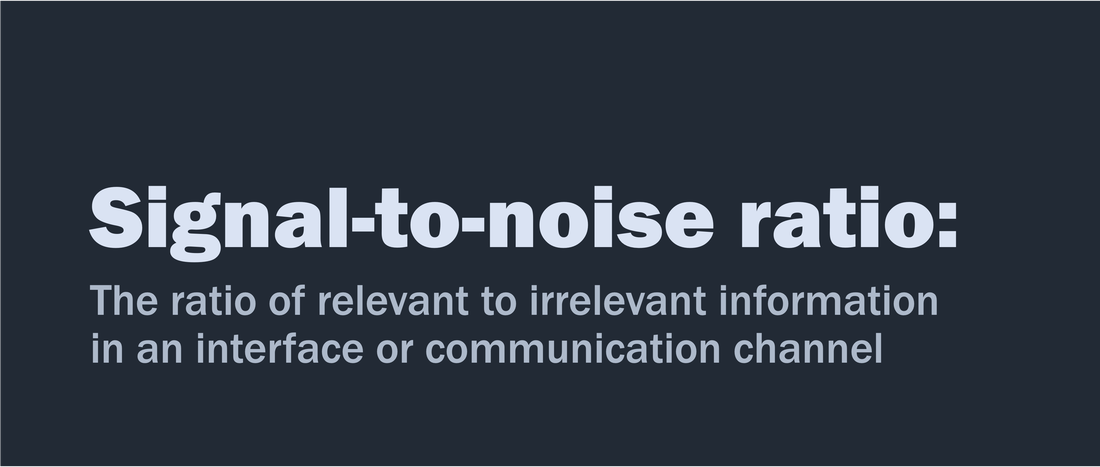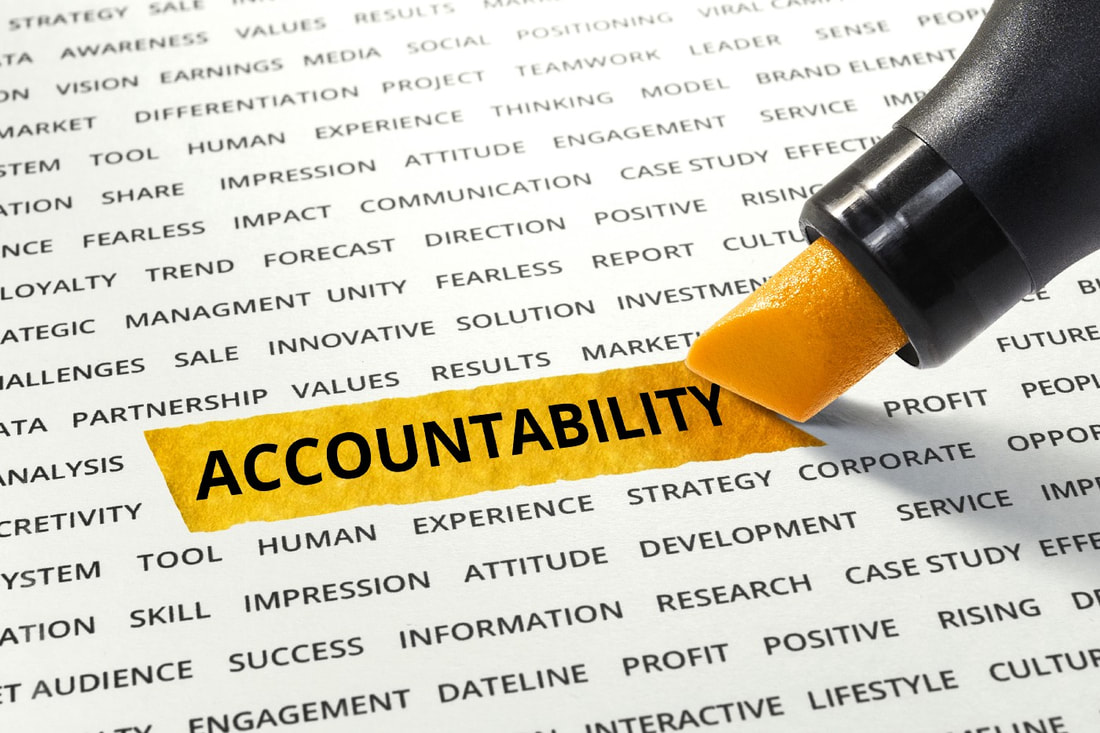|
The passing of the Covid pandemic has been a great relief for many; boards of directors are no exception. Several weeks ago, I visited Sydney, Australia to meet with directors, boards and leaders of membership bodies. The feedback was clear: if companies (and through them, economies and societies) are to prosper, boards need to start thinking strategically again. Last week, more grist to the mill. During a successful visit to Bengaluru, India to lead a Board Immersion Programme for a globally-known FMCG company, the question of how boards can add value was front-of-mind throughout. Today, I'm delighted to announce my first post-Covid visit to the United Kingdom and Europe, to continue the advisory work there. From November 16th through 25th, I will visit the UK, several EU countries, and elsewhere as required, to respond to requests to speak, and to help boards respond well as they pursue sustainable business performance. This includes:
Do you want to meet in November? Regardless of whether you have a specific request or a general question, please get in touch. I'll respond promptly with some suggestions for your consideration.
0 Comments
I’ve spent quite a bit of time in recent weeks thinking about problem solving; my attention drawn, in particular, to problems that fall between simple (for which answers are self-evident) and wicked (easily defined, but for which an answer is elusive due to incomplete or contradictory information, or changing requirements). Difficult problems are those that can be solved, but answers are far from evident, even following careful enquiry. The BBC Series, The Bomb, explores a case in point. Nuclear fission was discovered to be theoretically possible (Leo Szilard), but considerable effort over the following decade was required to finally tackle the problem in practice. So-called ‘difficult problems’ require, clearly, intentional enquiry and, often, patience. As with gravity and magnetism, the underlying explanation (resolution) cannot be observed directly, only through its effects. So, deep and critical thinking is needed, if a resolution is to be discovered. Such problems are familiar territory for boards: if they were straightforward, management teams would resolve them. And therein lies the challenge for directors: the underlying cause of a problem raised to board level tends to be hidden under that which can be seen. And what is more, any linkage between the problem, the underlying cause, what can be observed, and any subsequent effects or impacts (note: plural) is tenuous and, almost certainly, contingent. If boards are to be effective in their work (governance: the means by which companies are directed and controlled), directors need to be alert, astute and actively engaged—more so because resolutions to difficult problems cannot be discerned directly. Thus, directors need to think beyond what is written in board reports, and what is apparent when reading other materials. Those who think they can get away with quickly reading board papers a few days before the upcoming meeting are kidding themselves. If directors are prepared to read widely across a range of topics, allocating 1–2 hours per day for six days every week, to consider ideas and think deeply, the likelihood of uncovering possibilities and solution options is greatly enhanced. Indeed, the correlation between, on one hand, time spent reading and thinking deeply, and on the other, high quality decisions is stark. Time and critical thinking matters, if directors are to add value.
The transition to electric vehicles looms large for many. Most of the major manufacturers are scrambling to offer new and exciting models to entice both corporate and private buyers. Enticements are being offered by some governments to encourage adoption. Regulators are active too, especially in Europe and California, with announced intentions to ban new vehicles powered by petrol or diesel. The opportunity to embrace a transport technology that is cleaner, quieter and considerably cheaper to operate (than petrol or diesel alternatives) is attractive—once the initial purchase price hurdle leapt. The purported benefits seem to be significant, but does the reality match the rhetoric? As with any proposal to embrace system-level change, the costs of moving from one technology to another are far from trivial. If an assessment is to be complete, the total lifetime costs (TLCs) need to be considered; that is, the sum total of all costs incurred over a product/system’s lifetime (includes manufacture, operation, disposal). In the case of electric vehicles, what of the economic, environmental and social costs of extracting metals for battery ingredients; logistics and manufacturing; replacement of batteries when they are spent; battery disposal; and, of upgrading the power generation and distribution network to provide adequate electrical power to recharge batteries? Many of these are being quietly ignored, it seems. Not my problem, some argue, as if out of sight is out of mind. This short article argues that when the TLCs are factored in, the benefits associated with a seemingly compelling technology (in this case the adoption of electric powered vehicles and other devices with battery power packs) may not be as great as what has been claimed. And so to the purpose of this muse, which is not to argue the benefits or otherwise of adopting electrically powered vehicles. Rather, it is to table an issue often overlooked by board of directors considering so-called strategic projects: total lifetime costs. When faced with a strategically-significant proposal, boards first need to check for alignment, by testing whether the proposal is contributory to the corporate strategy (spoiler alert: often linkages are tenuous). Assuming it is, directors should satisfy themselves that total lifetime costs have been included. Only then can the question of whether the recommendation should be embraced or rejected be debated. Why might this be important? Directors are duty-bound to act in the best interests of the company. That means taking all relevant information into account. If boards ignore externalities, or abuse the social, environmental and economic capitals consumed in the operation of the company, the governed company is unlikely to endure over the longer term. And in so doing, directors may be exposing themselves, unwittingly, to legal challenge as well.
ESG and sustainability are hot topics in business and, increasingly, civil society. Hardly a day goes by without one or both being mentioned in newsfeeds and across social and mainstream media. Since the term ESG was first coined in 2005, and more so through the coronavirus pandemic, researchers and commentators have promoted ESG as the answer to what have been held up as great issues of our time—issues such as changing climatic conditions; the impacts of fossil fuels; population growth; modern slavery; the excesses of capitalism; geopolitics; and, more besides. Shareholders are starting to acknowledge companies should be doing a better job, in terms of appropriately stewarding the resources used in the operation of their business and fulfilling their duties. Institutional investors in particular are applying direct pressure to refocus board attention and business priorities to tackle the great issues—their underlying belief is that ESG-based approaches provide more sustainable long-term value creation. What is one to make of these developments? Evidence to support claims that ESG-based investments outperform other investments is yet to emerge. The question of why this might be the case remains open. It could be that investments have been poorly placed; expectations are unreasonable; measurement systems are inappropriate; and, probably, more besides. Of these possibilities, the spectre of inappropriate measurement systems looms large. A couple of years ago, Ethical Boardroom, a magazine read by tens of thousands of board directors, advisors and executives, commissioned an article on the matter. I concluded that a measurement and reporting framework founded on the three main capitals used in business would probably provide a more informative and complete measure of sustainable business performance than ESG. A copy of that article follows. If you have any comments and suggestions on this, including criticisms, please do let me know—either in the comment box below or, if you prefer, a private message.
The role and contribution of the board of directors in companies has become a source of fascination for many; curiosity growing with each corporate failure or significant misstep emanating from the boardroom. On paper, the role of the board is straightforward: to steer and guide the company towards agreed objectives. The legal framework within which directors operate is both stable and adequate, duties are specified and the principles are clear. So, what could possibly go wrong? Guidance to help boards govern well is not in short supply. Many researchers have postulated the configuration of the board is material to effectiveness and outcomes; some say the key lies in board process and policy; and yet others point to boardroom behaviour. Consulting firms and directors' institutions have proposed models too. While these proposals are enticing, failure studies and other analyses suggest none provide surety in terms of helping boards operate effectively in practice. One of the reasons reliable guidance remains elusive is that board work is far from straightforward. Long-term studies of boards informed by direct observations of boards in session are few and far between. And, boards need to consider many things, debate options, weigh up risks and, ultimately, make decisions—all within an environment characterised by ambiguity and change. And if that is not enough, the board does not operate the company, the executive does. If a board is to have any hope of discharging its duties, much less govern well, a solid foundation is crucial. That means directors need to understand their role and duties, and make sense of information.
If a board is to exert any meaningful influence beyond the boardroom, directors first need to understand the duties of a director and role of the board. Competence gaps are not tolerated in medicine or engineering: No one would expect a doctor to use a carpenter’s tools, or accept crayon drawings from an engineer. And yet such acceptance is tacit amongst directors and shareholders. What is more, if a director transgresses, the likelihood of being held to account before the judiciary is relatively low. A commitment to professional development, and the professionalisation of directorship, are proposed as mechanisms to close the competence gap. Once in the boardroom, directors need to apply their collective knowledge and expertise, maturity and wisdom as they consider information, distinguish signal from noise, and make decisions. If that can be achieved, the likelihood of the board making an effective contribution greatly is enhanced. The gap between the board's provision of steerage and guidance (i.e., governance) and business performance has been at the core of my work over the past two decades, motivating my formal research, practical enquiry and contributions as a director. If you would like an update on recent progress, please contact me.
Much has been made in recent weeks of the invasion of Ukraine by Russia. Social and mainstream media has been awash with commentary, both about the situation on the ground, and of various moral and ethical issues arising, not to mention significant geopolitical and balance of power impacts. The Western world has rallied in support of Ukraine. Governmental–, corporate– and community–level responses have been announced and taken including accepting refugees, providing humanitarian support, and organising fund-raising and community support. Governments have imposed economic and trade sanctions as well. Many companies have decided to withdraw from the market. Others have chosen to remain, for a variety of reasons. Some, who initially held the line, have subsequently changed their mind after feeling the effects of a backlash. Directors have resigned from boards too, signalling they have no interest in continuing to serve on the boards of Russian companies. To say the situation is fluid and outlook is uncertain is an understatement. In cynefin–speak, the appropriate descriptor is 'chaotic', meaning rapid response is appropriate: searching for the 'right' answers is futile. Despite the ambiguity and uncertainty, directors must continue to make decisions, to govern. In a crisis, most boards, rightly, focus on the here and now. Strategy and strategic initiatives are put to one side, and accountability may languish too. All available resources are applied to understanding and stabilising the situation. But after the heat has subsided and the situation is brought under control, boards need to take stock. They owe a duty of care (to themselves but also shareholders and legitimate stakeholders), for both their actions and those of management. Were the decisions made and actions taken during the crisis appropriate given the information to hand and prevailing situation at the time? The review may find the board operated within statutory and regulatory boundaries, and that decisions taken in averting the crisis were reasonable. But what if decisions and actions are found to have crossed moral or ethical boundaries? Where should accountability lie? The question of moral accountability cuts across personal and professional reputation, organisational culture, and market confidence. And to the future, where should the board's moral compass point, what conduct is appropriate, and how should the board's actions be assessed?
In 1960, Jane Goodall, a trailblazer in the field of primatology, visited the Gombe Stream National Park in Tanzania to study chimpanzees. And so began a 60-year study of chimpanzee social interaction. The study was groundbreaking; revealing new insights about chimpanzee behaviour and interaction. Goodall observed directly, for the first time, human-like behaviours in chimpanzees. These included toolmaking (albeit rudimentary) and armed conflict between competing individuals and groups. Consequently, humanity's understanding, of both chimpanzees and itself, changed. Some centuries earlier, Copernicus produced insights about the transit of planets; specifically, that the planets have the Sun as a fixed point around which they orbit. This observation undid conventional wisdom, which held that the Earth was the hub around which other bodies orbited. Later, Kepler explained the observations. These examples illuminate the value of long-term direct observations of dynamic entities, especially groups of entities, to achieve more accurate understandings of not only the entities, but their actions and interactions. The principle holds in contemporary society. Sociologists and anthropologists, for example, have long seen the importance of observing social groups first hand (long-term ethnographic studies, sometimes involving full participation) to gain insights that might lead to more complete understandings and explanations of group dynamics, and the impacts and consequences of group action and interaction. Moving now to consider a subject of great personal interest: boards and governance. How do boards work, and what are the characteristics of an effective board of directors? Can, and if so how, boards influence company performance? And how might one go about finding out? To date, the predominant approach to tackling these questions has been to apply scientific principles, in search of linkages between attributes of boards and company performance. But this enquiry has raised yet more questions. For example, can a comprehensive understanding of the function, interaction and impact of boards be gained by studying isolated attributes of boards, such as the number of directors, independence, 'diversity', or other static attributes, all from outside the boardroom? Or by applying statistical methods to search for regularities (or differences) in publicly available data? Or by interviewing or surveying directors and/or managers about their perceptions about the conduct or behaviours of directors during board meetings? Enquiries utilising these approaches have produced thousands of research papers and published articles. They have been helpful in so far as they have provided clues about what may or may not be material to identifying the characteristics of high performing boards and the impact of boards on company performance. But the basis of these studies is not as it first seems. These are not studies of boards in action, they are studies based on representations of specific attributes associated with boards, not actual data about the board going about its work—just as the headline picture looks like a pair of giraffes but they are representations, not giraffes. A small but burgeoning group of researchers have taken a different approach. Invoking Goodall, they have completed long-term observation studies of boards of directors going about their work (i.e., the researcher in the board room, silently observing the board in session, over an extended period to move beyond the behaviour modification that naturally occurs when someone or something arrives in the environment). To date, fewer than a dozen studies have been published. These studies have produced insights that are somewhat different from those produced by remote studies of isolated attributes of directors and boards. In particular, the importance of certain director capabilities, board activities (tasks) and director behaviours is highlighted. Static attributes, such as board structure and composition, seem to be far less relevant. So, two different approaches, and two different sets of conclusions. That is perhaps not unexpected. But it does leave a rather awkward question—the same as that faced by Kepler, Copernicus and Goodall, and others who have reached observation-based conclusions that have differed from conventional wisdom. Might the small group be on to something? And, if so, might the majority (in this case, business school academics, regulators, institutions, governance consultants) be prepared to set conventional wisdom aside, to pursue a different understanding of how boards can influence the performance of the companies they are charged with governing?
Every year, at about this time, sages and futurists of various stripes peer out from their sanctuaries to offer opinions of what the future holds. Many speak or write deterministically, as if they have been blessed with special powers to know or postulate the future with great accuracy. Pronouncements are read with great anticipation by many, and embraced as if categorical. But some commentators are more circumspect; their contingent expressions reveal great maturity and wisdom. “Forecasting is always a hazardous business. … no one can claim that the future is entirely inscrutable.” One does not need to look far to see examples of the difficulties faced by those charged with forecasting and strategising. Over the last two years, for example, undertones of fear and stasis have been prominent. People and companies have frozen in response to pronouncements and dictates from national leaders. Economic and social priorities have been set to one side; the main—nay, only—focus has been on the pesky virus known as Covid19. First, borders were closed and populations were locked down, in an effort to flatten the curve. Some even tried to eliminate the virus. Then, recognising their folly, leaders embraced vaccination to reduce the effects of the virus. Most recently, mandates have seen populations divided into two classes, the vaccinated and the un-vaxxed. Naysayers have jumped in, but many of their predictions have proven to be wrong as well. Meanwhile, economies have struggled and the social fabric has frayed. Amidst this backdrop, boards remain responsible for the performance of the companies they govern. Of those who recognise this (and not all do), some boards wait, perplexed by the unknowns, and others strike out, believing they can control the future, despite a plethora of externalities. Neither response is particularly wise. High performing boards and leadership teams recognise that things change, often unexpectedly. They remain vigilant, watching for weak signals that might portend the emergence of something significant. They hold options open for as long as possible. Then, when it is time, they act, decisively. The types of questions high performing boards ask (and keep asking) include:
While some of these questions may be difficult to answer, boards must persevere. Even partial answers are likely to indicate a more reliable way forward than the lazy option of blindly pursuing the supposedly categorical predictions of mediums, sages and futurists.
News of a new variant of the coronavirus emerged this week. B.1.1.529 (now Omicron, a moniker assigned by the World Health Organization) was first isolated by scientists in South Africa. Already, it has been detected in several neighbouring countries and in the United Kingdom, Belgium, Czechia, Hong Kong, Germany, Australia and Israel. Governments are reportedly “scrambling to protect their citizens from a potential outbreak". These responses are supposedly to protect but also, undoubtedly, to buy time. Given the experiences since the coronavirus disease was first detected and subsequently declared to be a global pandemic, the reactions to the latest variant are hardly surprising. News agencies and social media commentators have been up to their usual antics; newsfeeds are abuzz. Fear is a powerful catalyst, of course. But reliable guidance to indicate whether Omicron is more or less contagious, and more or less virulent, is yet to emerge. For example, the two cases in Australia are asymptomatic and both people are fully vaccinated. A calm response is needed. Another interesting aspect of the current situation is the response to those who first alerted the world to what they had discovered. When virologists in South Africa openly shared the results of their advanced gene sequencing tests, others (especially in so-called advanced economies) were quick to point the finger. They accused several countries in southern Africa of being the source of the outbreak, and ostracised them by banning travel—even from countries with no recorded cases—demonstrating the blame game is alive and well. Effective leaders (boards) do not get caught up in the blame game. They take another path:
Then, having prepared and decided upon a course of action, effective boards remain engaged. They keep their eyes open, scanning for weak signals that might portend danger. If danger strikes, they engage immediately and fully—supporting the executive response but remaining calm at all times. Is your board well-equipped to lead in an event that threatens the company’s prosperity or viability? And what is the likelihood it will oversee an appropriate response? Will it work calmly with the executives as a conjoint team to assess the situation and activate an appropriate response, or will it remain aloof and descend into finger pointing (perhaps because directors are more interested in protecting their personal reputation)? If there is any chance of the latter, consideration should be given to replacing the board with directors who are prepared to take their duties more seriously.
As summer gives way to autumn in the Northern Hemisphere—and soon winter—so various externalities that frame the work of boards and enduring performance of companies continue to press in. Topical externalities include climatic change; shifting geo-political forces; technological disruptions; diversity, equity and inclusion demands; ever-increasing levels of regulation; the emergence of ESG; and, stakeholder capitalism. The challenge for all directors and boards, whether they acknowledge it or not (or even notice or care!), is to respond well in the face of what is patently a dynamic environment—to ensure the fiduciary duty they accepted when agreeing to serve as a director is fulfilled. Steerage and guidance—the essence of corporate governance—requires every director, and the board collectively, to be alert, to both set a course and to respond well in the face of externalities. The mind’s eye needs to be looking ahead, to ensure the reason for the journey remains clear, and that decisions are made in the context of advancing towards the objective. Quite how that should be achieved is the underlying question that has driven my life’s work. Following an extended break from writing—a consequence of dealing with the passing of our patriarch—I have ‘arrived’ back at my desk to think and write again, about organisational performance, governance, strategy and the craft of board work. If you have a question, or would like to learn more about a particular aspect of board work or the impact boards can have on organisational performance, please let me know! If we are to journey far, we need to explore relevant topics and learn together.
|
SearchMusingsThoughts on corporate governance, strategy and boardcraft; our place in the world; and other topics that catch my attention. Categories
All
Archives
April 2024
|
||||||
|
Dr. Peter Crow, CMInstD
|
© Copyright 2001-2024 | Terms of use & privacy
|











